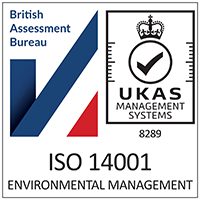Prioritising Safety: A Fresh Look at Workwear
Monday 28th April marked World Day for Safety and Health at Work – a timely reminder that creating a safe and healthy workplace starts with the right protective gear. Whether you’re in construction, warehousing, logistics, or engineering, it’s essential that your team has the correct equipment to stay safe, comfortable, and compliant.
Smarter Workwear That Works for Everyone
Gone are the days when workwear was a one-size-fits-all, unisex affair. Today, many leading suppliers are designing ranges specifically tailored for women, offering improved comfort, functionality, and fit, without compromising on safety.
High-Vis Clothing: Stay Safe, Stay Seen
High-visibility clothing is essential for anyone working near vehicles, machinery, or in low-light environments. From vests to jackets, high-vis workwear helps reduce the risk of accidents by making your team stand out. And it’s not just about visibility, it’s about compliance too. With executive,
Explore high-vis options here to ensure your team is equipped with reflective and durable options that meet the latest safety standards.
Head-to-Toe Protection: Safety Starts at the Top
Head protection is a must-have in construction, manufacturing and many other environments where falling objects pose a risk. Hard hats and helmets are available in various lightweight, comfortable styles that don’t compromise on impact resistance.
Don’t Overlook Eye and Hearing Protection
Eye injuries can happen in an instant, so having the right safety glasses and goggles is key when working with tools, chemicals, or in dusty environments. Our selection includes anti-fog, scratch-resistant, wraparound, and prescription-compatible styles.
Hearing damage is another serious but often overlooked risk. Prolonged exposure to loud environments can lead to permanent hearing loss, which is why ear protection like ear plugs and defenders is a must in industries such as manufacturing, aviation and construction.
Get a Grip on Glove Safety
Safety gloves are a vital part of any PPE kit, and the right type depends on the task at hand. Whether you require disposable or reusable gloves, its important to ensure you have the right gloves to suit the task and environment. From nitrile gloves for chemical resistance, to cut-resistant gloves for handling sharp materials, and thermal gloves for cold conditions, there’s a specialist option for every need.
We know that understanding the symbols and safety ratings on gloves can be confusing, which is why we recommend reaching out to our team for guidance. You can also request our free guide to understanding the safety symbols.
Let Us Help with a Free PPE Audit
With so many options on the market, and safety symbols that can sometimes feel like a puzzle, it can be difficult to know whether your current workwear and PPE are fit for purpose. That’s why Quills offers a free PPE audit. We’ll review what you currently use, see if your range can be simplified or improved, and ensure your equipment is compliant – click here to request a call back.
Make Safety a Priority, All Year Round
World Day for Safety and Health at Work is the perfect time to take stock and make sure your team has the right tools to stay safe. From head protection and safety glasses, to gloves, footwear, and hi-vis clothing, our new workwear hub has everything you need in one place and with the right experts on hand to help.
You can browse our full range of workwear options here, from hardwearing jackets and trousers to high-performance base layers and outerwear designed for every role and season.
Need help choosing the right gear? Get in touch for advice, quotes, or to book your free audit, we’re here to help.











